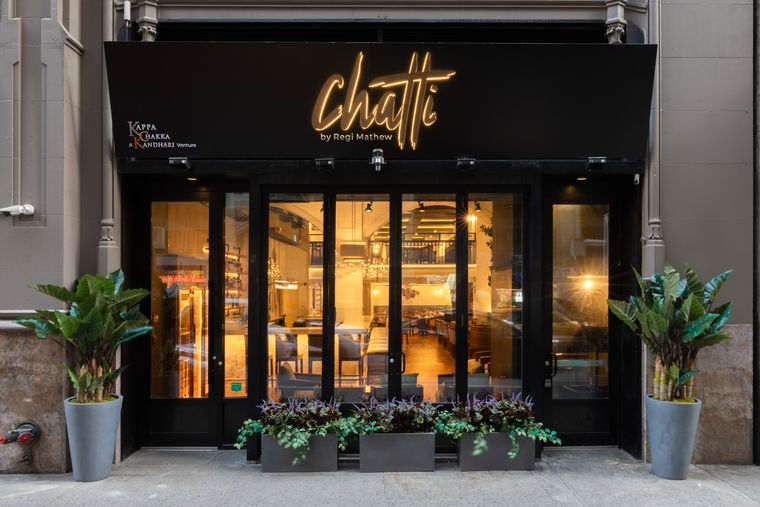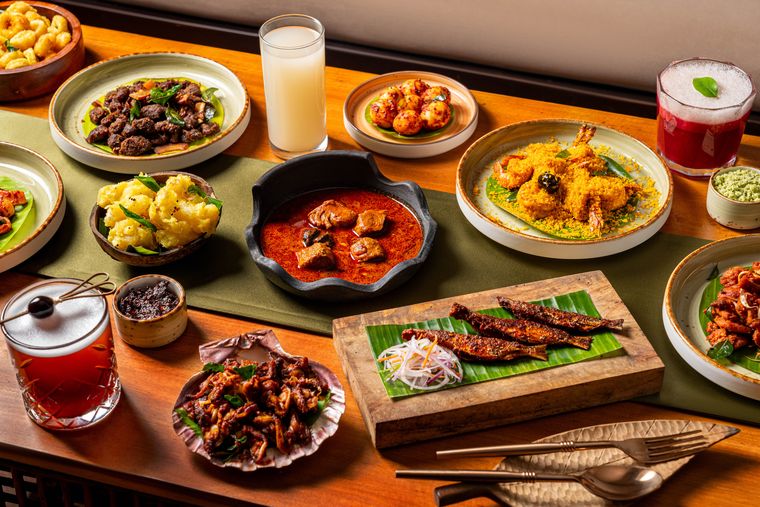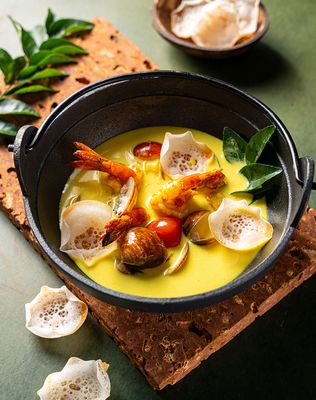Regi Mathew is doing something perhaps no India-based chef has ever done before―go global and open an Indian restaurant for an international audience. And, he has chosen the toughest food market in the world to launch ‘Chatti by Regi Mathew’, named after the clay pot used for cooking in his home state Kerala, on February 12 in New York.
“Food is a reflection of our culture and taking one’s food to the world is akin to inviting someone to your home and telling them, ‘This is what we are’,” said Mathew in a video call from New York. “I want everybody to understand that Indian regional cuisine has so much potential. Today I am doing it; tomorrow, a lot of others will get inspired and say, ‘yes, it can be done; let’s also try something’.”
While there have been Indian chefs and restaurateurs who have made it big on the international stage―Vikas Khanna and Gaggan Anand are the first that come to mind, their successes have been essentially abroad where either they studied and made their name (like with Khanna) or primarily built their career on an international stage, as is the case with Vineet Bhatia, who became the first Indian to win a Michelin star when he got it for his Indian restaurant Rasoi in London in 2001.
Mathew, however, has come up the hard way, growing up in Pala in central Kerala, studying in Kovalam and doing the grind in hotels in Bengaluru and elsewhere, honing his skills before opening the runaway-hit restaurant Kappa Chakka Kandhari, or KCK for convenience (kappa is cassava, chakka is jackfruit and kandhari is bird’s eye chilli―three common ingredients in Kerala cooking), just a few years ago.
First in Chennai followed by Bengaluru, KCK outlets earned rave reviews and scooped food awards in recent years, establishing Mathew as a sort of a poster-boy of Kerala food, a stature to which only perhaps Chef Suresh Pillai has come close in recent years, though in the latter’s case, his TV show stardom preceded him.
But Mathew wasn’t satisfied. “Even at that time, the dream was always to take it to the international audience. But I didn’t want to directly come and open a restaurant here,” he said. “I wanted to prove myself first before doing it.”
Mathew said he visited about 300 family homes across Kerala, meeting with ammachis (grandmothers/matriarchs of the household) who shared their recipes and cooked with him, letting him in on the secrets of what goes into that home-cooked Kerala meal that makes it so delightedly wholesome. “It blew my mind, all the insights I got,” he recalled. “And I felt that taking my native cuisine to a larger audience was the only way I could give back, by getting it international recognition.”
The home visits also spawned another facet of Kerala food―while the matriarchs took him into their kitchens, their husbands took Mathew to toddy shops, a ubiquitous sight in rural Kerala. “Toddy shops are a way of life,” he said. “People don’t just go there to drink. They go there to taste different types of food, and also to have conversations and make friends―that’s the culture we have.”
And, that’s why Mathew thought it would be perfect to present Kerala food through the concept of a toddy shop to an international market. “Just like tapas is identified with Spanish cuisine, I felt the toddy shop frame was the perfect subject to coin it all together,” he said. “Otherwise, it just becomes another new cuisine in New York, while we know Kerala food is so much more than that.”
The toughest bit will be for Chatti to appeal to a larger mainstream audience in a cut-throat F&B scene like New York’s, but Mathew wouldn’t have it any other way. “For me, it is a mission to take my cuisine international,” he said. “New York may be the toughest market to break into, but if I can make it here and prove myself and Kerala cuisine, what’s better than that?”
And Mathew wants to go all the way. He wants no shortcuts, and insists on preparing the food the whole hog―right from urlis (brassware used for slow-cooking) to spices that are sourced from plantations tried, tested and handpicked by him. And no ‘Americanisation’ or toning down the flavours to suit the western palate. “It is a moment of pride for me to showcase my culture and my food; it is like showing off your family history,” he said.
And as for the eternal question about Indian food―its spiciness―the chef has a ready answer: “I come from the land of spices. My definition of spicy is taste and flavour that lingers in your mind. It is not pungent nor gives you a burning feeling.” He said that Americans who have come in for trials have been excited about combos like pidi & kozhi curry (steamed rice ball with chicken gravy) and vattayappam & mappas (steamed fermented rice cake with meat in a gravy of coconut milk and spices). “It is exciting to see their reactions,” he said.
From various versions of appam to puttu to coin parotta and ‘touchings’ (a Malayalam colloquial usage for snacks that go with alcohol that Chatti has appropriated) like Prawn Pouches, Toddy Shop Beef Fry to the classic Karimeen Pollichathu (pearl spot grilled with spices wrapped in a banana leaf), Mathew is taking a wholesome bite of Kerala all across the seven seas.

The toddy shop theme continues on into the bar menu, this time with a touch of whimsy. There is a signature cocktail called Elephant Whisperer that mixes white rum and Prosecco with banana and coconut, while Chatti’s take on the classic Old Fashioned features ingredients like grated coconut, jaggery caramel and cardamom vermouth. There is even a vodka cocktail which has sambar and curry leaf foam!
While the restaurant, and the pricing, is positioned at an upscale American and international clientele, Mathew is hoping that Indians, especially Malayalis in America, also drop in. “I want every Malayali living here to feel proud about their cuisine and bring their local friends to show them,” he said. “It is like inviting them to your own house and giving them a great dinner!”
Of course, the packaging has to be done to present anything on such an international level. Mathew compares it to going for a job interview: “You have to be well-prepared and well-dressed.” Along with his KCK business partner Augustine Kurian and investors from the US, they have pulled out all the stops for that―a midtown address just a few minutes walk away from the hub of Times Square, with a total 160 covers (including a 10-seater private dining area) with tones of green, grey and copper giving that comforting earthy feel even while invoking ‘God’s own country’ vibes. The furniture―teakwood and rattan accents―is all imported from Kerala while tropical-inspired artwork permeates the wall. Total initial investment? Above Rs3 crore.
“A lot of Malayalis I spoke to here were telling me they were proud about their food and that now they have a place where they can take others and show them, that is how great a cuisine ours is,” said Mathew. “Not just Malayalis, every Indian can be proud that their food is reaching a global stage. We need to recognise the value of what we have, develop on it and present it to the world. Hopefully, this will be just the beginning.”




